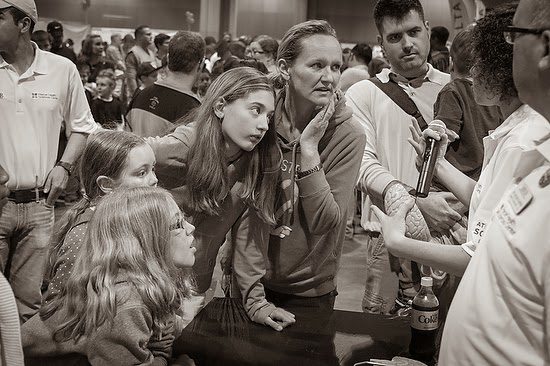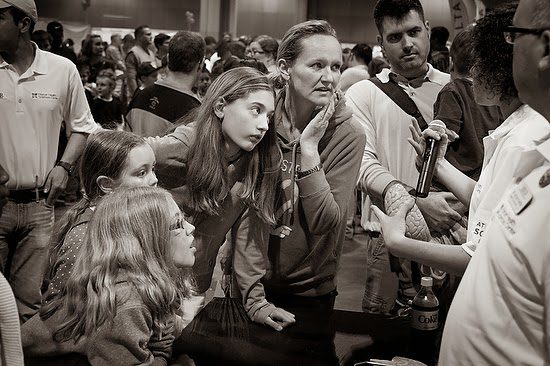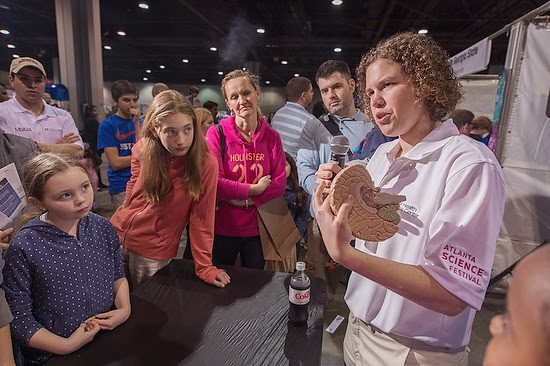| Nikon D4, 14-24mm, ISO 1100, ƒ/3.2, 1/100 Custom White Balance with ExpoDisc |
Composition/Graphics
You can use compositional elements like leading lines in the photo above to help direct your audience through a scene to where you want them to look. For example, I have the lines from the shirt directing me back into the photograph to the guy talking.
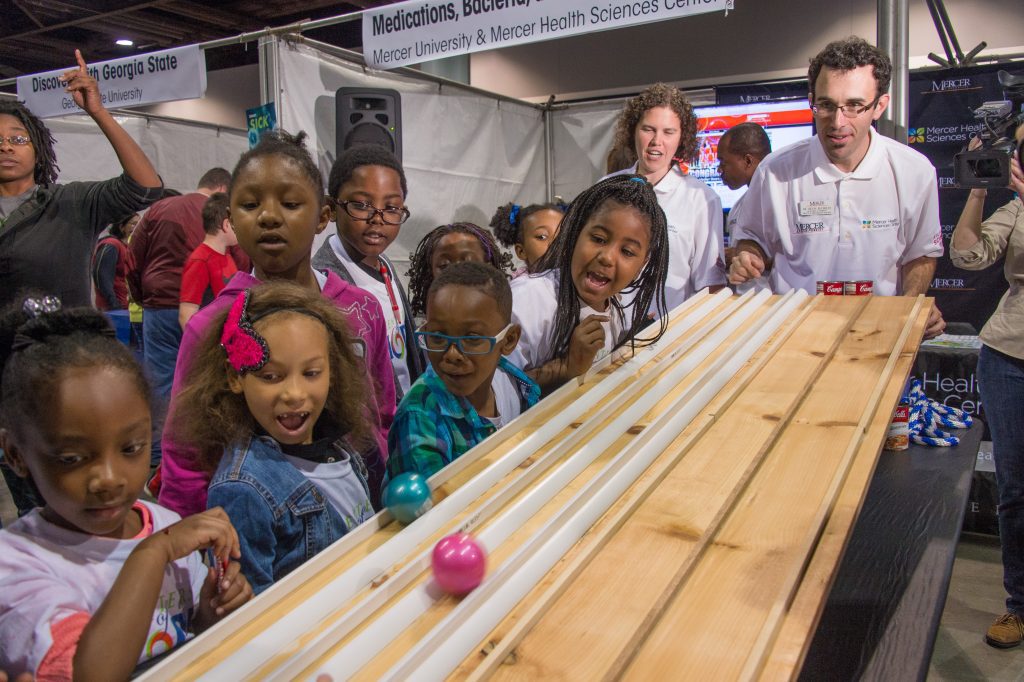
Light
Now with this photo of the kids watching down the incline, the balls racing each other, I am using the pitch to lead your eye, but I am also using another element to help direct your attention—Light.
Using an off-camera flash, I can put more light on the man at the top of the incline and also light the kids. As the light drops off to the background, it is slightly darker, so your eye doesn’t go there first.

I knew that if I didn’t use a light on the subject holding the weight, you might drift to anyone of the people in the background.
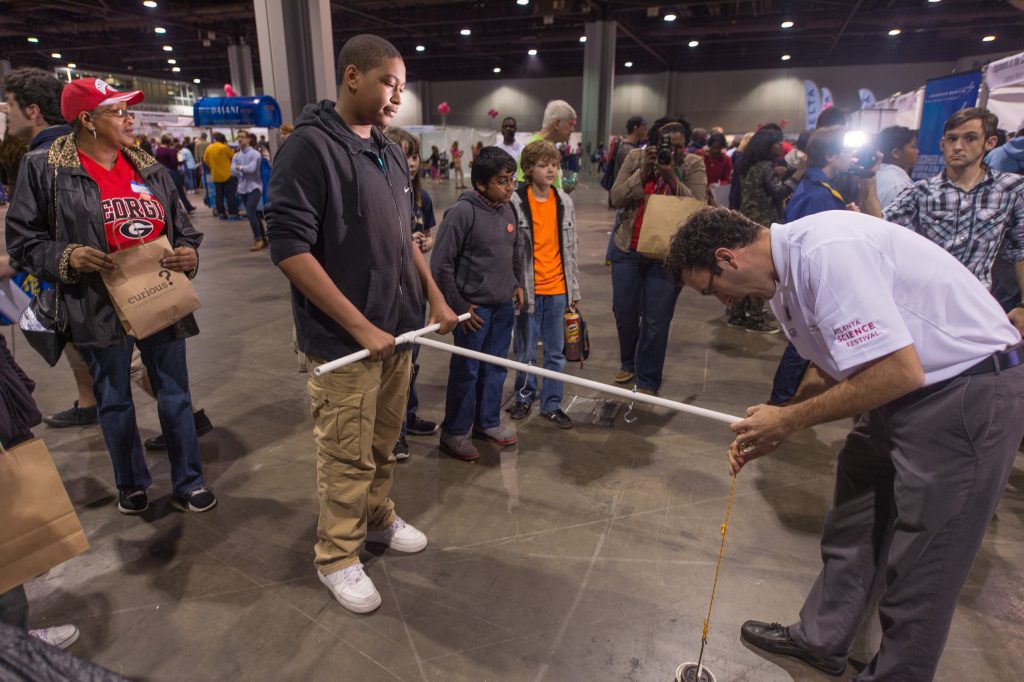
In this photo, you can see my photo assistant being a VALS [Voice Activated Light Stand]. The flash is helping me pop the subject out from the crowd.
Now on the flash, I am using a 1/4 CTO gel that works well with the available light. I started with 1/2 Plusgreen gel, but even with color correcting using the ExpoDisc, the color never looked right on the faces compared to the background.
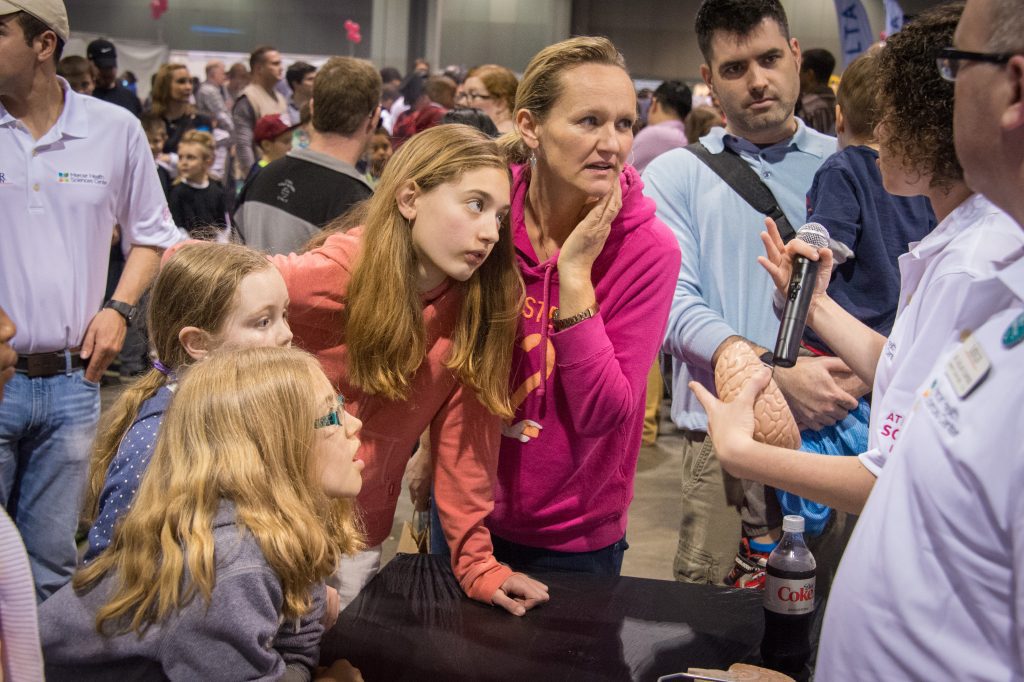
Color
You can also use color to draw your eye into a photo. Here the lady in pink draws your attention because she is wearing Pink. Unfortunately, the same image in Black & White loses the directing quality of the color.
To make a B&W photo work, photographers will burn and dodge to direct your eye with available light photography. Here I have burned in some photo areas, so the lightest area leads your eye.
Light is the greatest influence in photography
Photography is writing with light. That is what the word means. Now take a moment later, I decided to add light to the situation above. Watch how much I am currently directing your eye with the light.
While the lady in pink is drawing some of your attention, I have more light on the scientist here holding a brain model.
I have now really isolated where I want you to look in black and white. So I have removed the color influence of the pink jacket, and you are now because of introducing a spotlight on the subject, a way for me to influence where the audience looks.
Put it all together
Here I am using the off-camera flash and a longer lens of 90mm to come close to the two little girls. But, most importantly, I am capturing a moment where their eyes are communicating interest, and this is the second most important part of a photograph—The Moment.
Here I am using the off-camera flash to light the young boy and make the background darker. The mother’s orange jacket is a complimentary color to the blue jacket, and I am also using the color to help direct you. I am using the hand of the scientist holding the brain model. In contrast, the mother’s hands continue to lead you toward the boy’s expression on his face—this moment of interest by his eyes and mouth expressions showing interest. The mom’s expression also compliments her son’s expression.
Here I am again using the off-camera flash to brighten the people in the foreground and the background is now darker. I am still using composition to help direct you and, most important, looking for the moment that tells the story. The embroidery on the scientist’s sleeve almost replaces the need for a caption.
The off-camera flash enhances capturing a moment with a father and daughter. In addition, the photo reads faster than had I relied solely on composition alone.
As seen in this last photo, your eye will wonder if the photographer hasn’t used all the tools necessary to direct your attention.
When you look back at your photos from something you attended, and nothing stands out, there is a reason. Are you using all the tools at your disposal to capture moments? Of all the tools you can use, off-camera flash maybe the best weapon you have. Do you know how to use one?
Give me a call for a personal class for some one-on-one instruction if you would like to master this technique.


